[vc_row css=”.vc_custom_1612380408194{padding-top: 20px !important;padding-bottom: 20px !important;}”][vc_column][vc_video link=”https://youtu.be/L6qNwsjmRvc” css=”.vc_custom_1666203207254{padding-top: 20px !important;padding-bottom: 20px !important;}”][vc_column_text css=”.vc_custom_1666207494765{padding-top: 20px !important;padding-bottom: 20px !important;}”]Can you deduct your financial advisory fees? The short answer, It depends.
Today, we’ll be going over the top 3 methods Canadian advisors use to charge their clients and whether or not those methods allow you to deduct their fees on your tax return.
Method 1: Fee for service
The first payment method we’ll be covering is fee for service. This entails paying an advisor a flat or hourly fee to complete a financial plan.
For example, John Smith is a certified financial planner with two payment options. You can pay him a flat fee of $5,000 for a financial plan or an hourly rate of $250 per hour.
In both scenarios, the fees paid to John Smith wouldn’t be tax deductible. This is because financial planning or counseling fees are considered personal expenses, rendering them not deductible. Financial advisory fees are only tax deductible if they are incurred to receive advice when buying or selling an investment.
This brings us to our second payment method
Method 2: Commissions
If you own mutual funds, your advisor may have received an upfront or ongoing commission from the mutual fund company.
As mentioned, financial advisory fees are only tax deductible if they are incurred to receive advice when buying or selling an investment. If an advisor is charging you a commission at the onset of your purchase or ongoing, it seems that would be considered advice and be eligible for a tax deduction. Unfortunately, that’s not the case. To understand why we need to better understand the inner workings of these types of mutual funds.
In Canada, the average mutual fund fee is just under 2%[1]. If you invest $100,000 in a mutual fund, you can expect to pay around $2,000 per year to own that fund. This fee is paid directly to the mutual fund company. Once paid to the mutual fund company, about half (or 1%) is paid back to your advisor or bank branch. The devil is in the details.
In this scenario, you are receiving advice from your advisor, but you are not directly paying for that advice and thus cannot deduct the ongoing 1% fee that your advisor is being paid since they are being paid by the mutual fund company. Although not all is lost, as commissions paid increase the adjusted cost based (ACB) of your investment. This will reduce your eventual capital gain or increase your capital loss when the investment is eventually sold. Capital gains or losses are only relevant in non-registered accounts; there will be no tax savings in a TFSA or RRSP.
That was a lot of mumbo jumbo, so what does this mean?
Jane purchased a $100,000 mutual fund in a non-registered account through her advisor. This fund had a fee of 2%, of which 1% was being paid as a commission to her advisor by the mutual fund company. After one year, Jane’s mutual fund grew to $110,000, and she decided to sell it. Over that year, her advisor was paid a 1% commission of approximately $1,000.
Jane’s adjusted cost base was originally $100,000 (what she had put into the investment), but because her advisor was paid a $1,000 commission, her new adjusted cost base was now $101,000. This had the effect of reducing her capital gain to $9,000 instead of $10,000. As this was in a non-registered account, Jane would have a smaller gain to input her taxes, reducing her overall tax bill.
The final method we’ll review is the most effective for deducting financial advisory fees.
Method 3: Fee-based Accounts
Clients using fee-based accounts will pay their advisors directly rather than through a third party like a mutual fund. Since clients are directly paying for advice on which investments to buy and sell, they are eligible to deduct their financial advisor’s fees. However, they can only deduct the fees they are charged in a non-registered account. Fees charged in a registered account such as a TFSA or RRSP are not eligible for deduction.
For example, Chris has three fee-based accounts with his advisor. He has a TFSA, RRSP, and non-registered account. His advisor charges him an advisory fee of 1.25% of the value of his portfolio.
Each account is charged individually, but as mentioned, he won’t be able to deduct the fees in his TFSA or RRSP. Only his non-registered account would be eligible.
Let’s say that Chris had $400,000 invested in a non-registered account. After one year, he paid his advisor $5,000 (1.25%) via the account. Chris would enter $5,000 as his total carrying charges when completing his tax return. Assuming he has no interest or other expenses to claim, he would also enter $5,000 on line 22100 of his tax return.
If Chris was in a 40% tax bracket, he would save $2,000 on his taxes by adding this expense.
Summary
To summarize, If you are paying an advisor a flat or hourly fee for a financial plan, you will not be able to deduct your expenses. If your advisor is receiving commissions from a mutual fund company, you will not be able to deduct your expenses, but you may receive some tax relief when you eventually sell the mutual fund if it’s in a non-registered account. If you are paying your advisor directly via a fee-based account, you can deduct the fees charged in your non-registered account.
[/vc_column_text][/vc_column][/vc_row]






